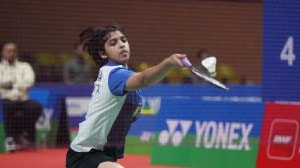Rishita Singh, an 18-year-old from Varanasi, who is aiming to pursue BA (Hons) from Delhi University, claims that her CUET score decreased by 70 points due to the normalisation process. “The score that I calculated on the basis of the final answer key was way more. My raw score was 776 (out of 800) which has been reduced to 705 and this leaves me with little chance of getting into the desired colleges of Delhi University,” she told indianexpress.com.

The UGC chief, M Jagadesh Kumar, has defended the normalisation process by stating that it is important in order to offer a “level playing field” for all students.
Story continues below this ad
“First, we must remember that in a given discipline, we were required to conduct CUET in multiple shifts in a subject due to the large number of students participating in the test. For example, if the exam is in economics, NTA experts prepare multiple economics papers for use in different shifts. Despite our best efforts, the difficulty level of each paper will slightly differ from the other. Therefore, one needs to use normalised scores instead of obtained scores by a student.
“For this purpose, we use a scientific method called the equi-percentile method for normalising the difficulty level across different shifts. In the process, the normalised scores for some students will be less than the obtained score; for others, it may increase,” he told indianexpress.com.
However, students are alleging that the National Testing Agency (NTA) has converted the CUET UG exam from a talent and intelligence based exam to ‘luck-based test’.
“I know several others like me who appeared for the CUET UG exam, and while some of us had difficult exams, there were others who appeared for shifts with moderate difficulty levels. But how is that our fault? My marks have been reduced by 40-50 points and that can cost me a seat at my desired institute in Delhi University. It is purely about who is lucky enough to get the rare chance to have his/her score increased, but others like me have suffered,” said Ashwina Asthana, who is aiming to pursue BA (Hons) Economics from Delhi University.
Story continues below this ad
Agreeing with Asthana, Singh added that the process feels ‘unfair’ to her. “It is utterly unfair, and a luck-based performance in the name of providing a level playing field. None of the people I know have benefitted from normalsation. People who score 50 points less than me are 5 points ahead of me, after this unfair process.”
Kumar, however, rubbishes these allegations and claims that “this method has been in vogue for decades globally and is a statistical procedure for establishing correspondence between scores on different tests. Therefore, there is no luck or unfairness. Students need not worry about it.”
Some students have also advised NTA to watch out for the margin with which the normalised score was calculated. ”
“In the General Test, my score decreased from 151 to 129, in Maths it decreased from 134 to 109. I agree with NTA about the normalisation process and I understand that it is needed for fairness, but the margin of normalisation is huge. So, NTA should find a solution for it and ensure that the students who are scoring well on the basis of their preparation and merit are not adversely affected,” Suhavni Pulani, a 17-year-old from Delhi, said.
(With inputs from Khushi Dawar)

































